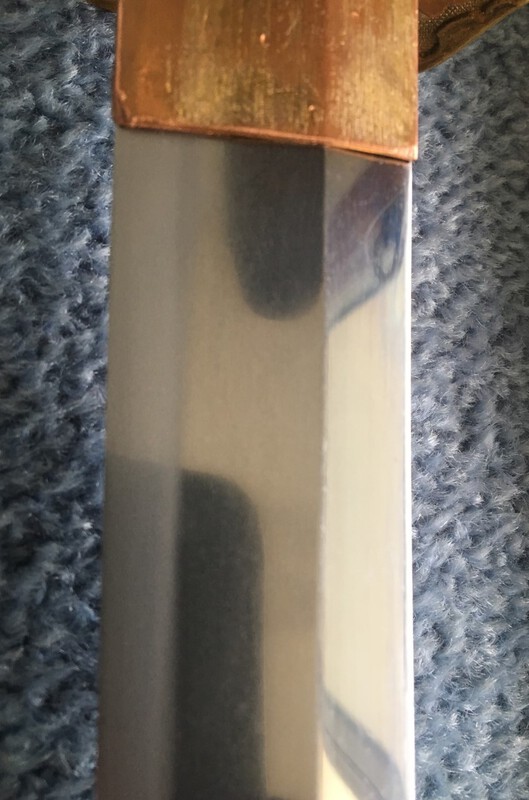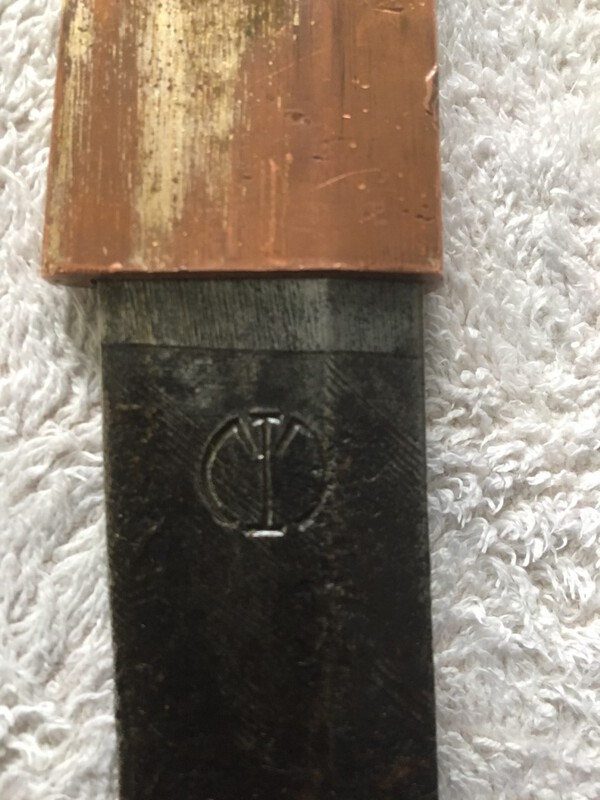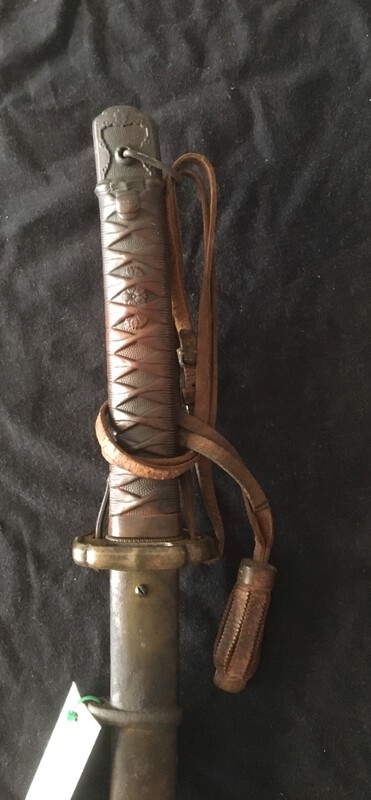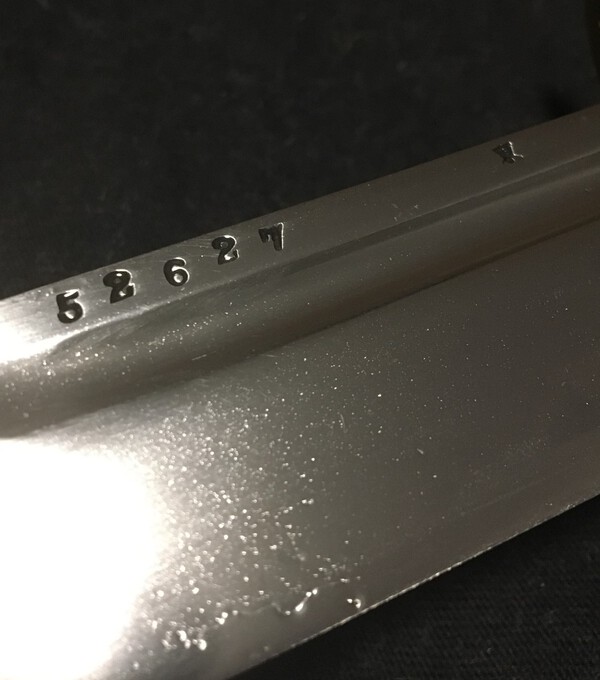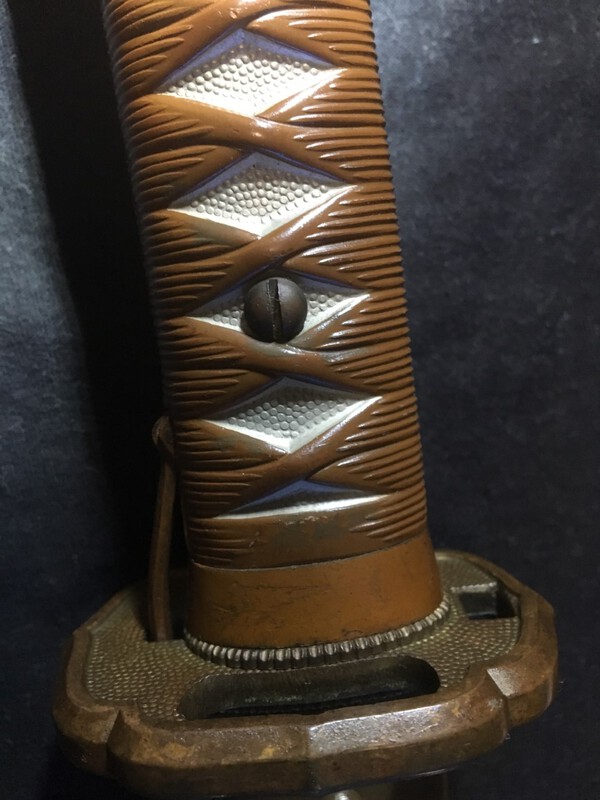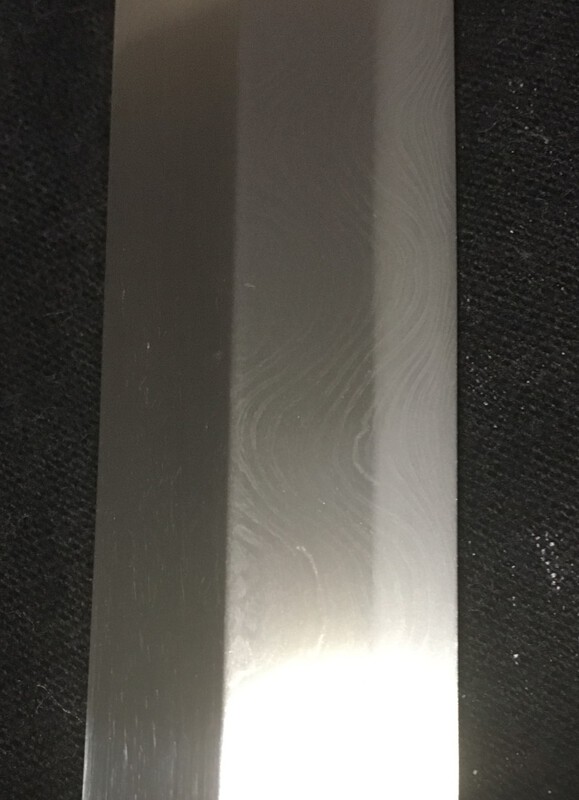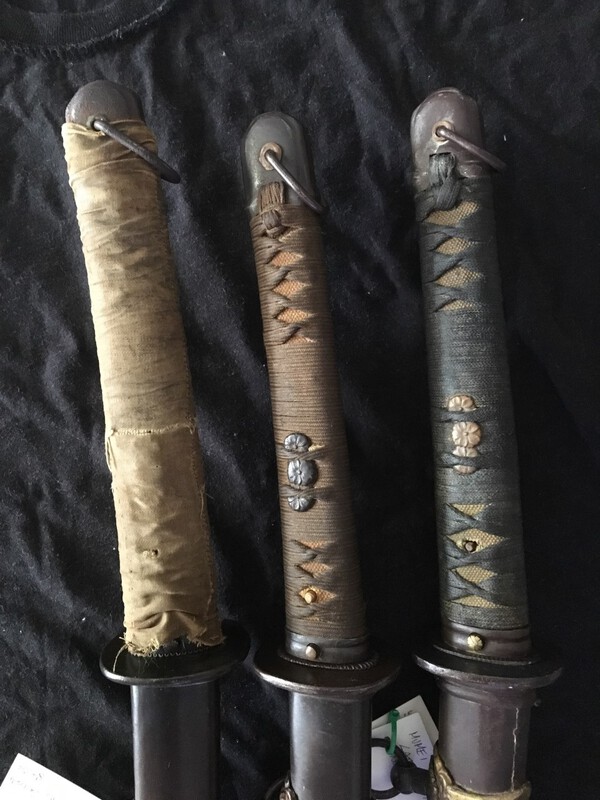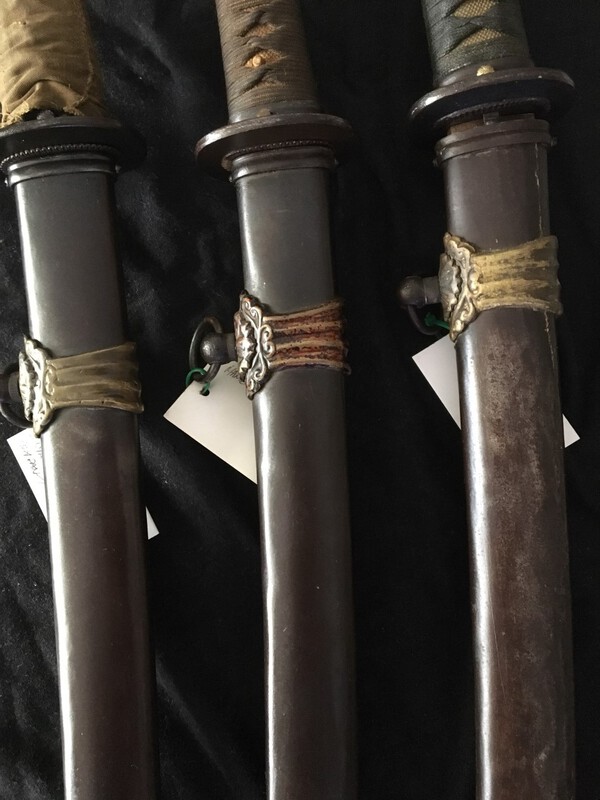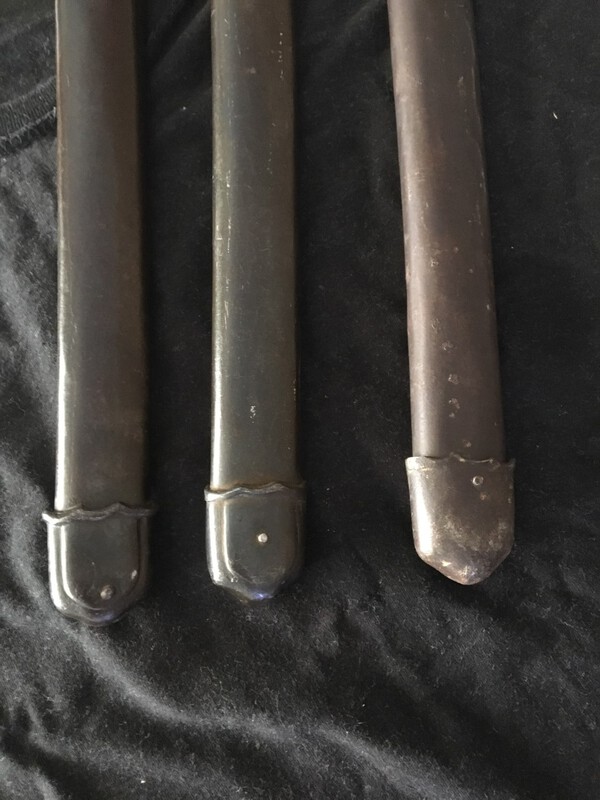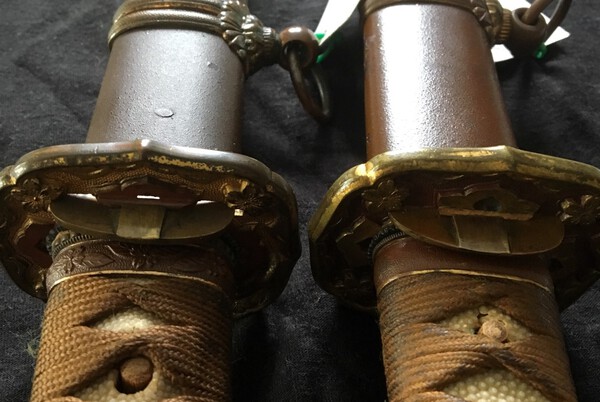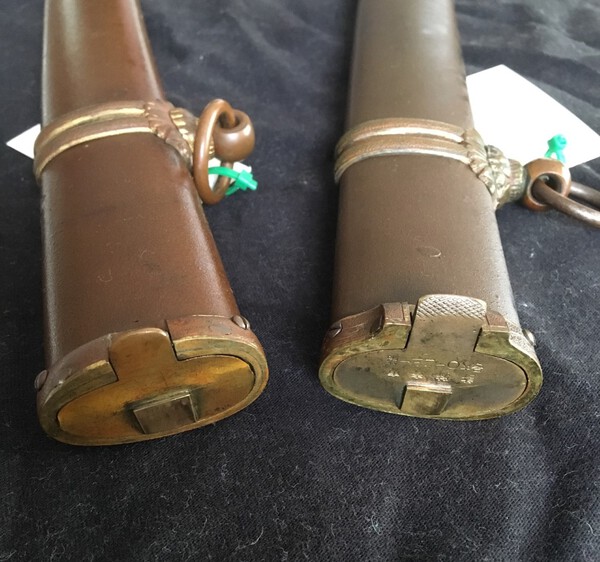-
Posts
1,902 -
Joined
-
Last visited
-
Days Won
85
Everything posted by IJASWORDS
-
Help with this Kanbun Yoshikuni would be appreciated. Is it Seshu Ju? And what is the English translation, thanks.
-
Yes, celluloid that usually yellows a bit over time.
-
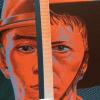
Attention Mantetsu Owners: A Survey
IJASWORDS replied to Bruce Pennington's topic in Military Swords of Japan
Thought I would put up a few pics of my Winter 1938 Mantetsu, Bruce already has the numbers. I guess this is fully Chinese made due to the uncommon Manchurian Railway stamp. This is an early made example. Has very visible hada, and nice Hamon. -

Attention Mantetsu Owners: A Survey
IJASWORDS replied to Bruce Pennington's topic in Military Swords of Japan
Bruce, my Spring 1944, has mune stamp SE2340. Also with a Dairen Stamp. Does this mean a definite sequence of numbers of manufacture by each factory? -
From my perspective, a discussion on each of the 8 patterns individually would be great. Parts, numbers, variations within each pattern. Would make sense for writing a book as well.
-
-
-

Looking for Advice - All Opinions Welcome!
IJASWORDS replied to Bruce Pennington's topic in Military Swords of Japan
Menuki in the mail Bruce. Have a go yourself, what have you got to lose. -
Fantastic work Steve! The pattern 2 has a second hole in the tsuba, I guess for the leather tassel. Here is a photo of one of mine for comment. Also shows original colour, and the punch mark locking the nut.
-

Looking for Advice - All Opinions Welcome!
IJASWORDS replied to Bruce Pennington's topic in Military Swords of Japan
Bruce, there are two ways of wrapping, one with menuki exposed the other covered. Both should be cheaper than the more complicated wrap. -

Looking for Advice - All Opinions Welcome!
IJASWORDS replied to Bruce Pennington's topic in Military Swords of Japan
Bruce, Fred Lohman has done a nice rinji for me. And if you buy me a beer next time I am in the States, I'll send you a couple of menuki. Please email your postal address. -
Steve, a Yasukuni was certainly on my second tier list, but as a beginner, the examples I saw were out of my price range. It is interesting to note that in collecting my first list, there a mix of koshirae.... 98's, Rinji, and Navy Kais. This led to a fascination with the various WW2 mounts.
-

Looking for Advice - All Opinions Welcome!
IJASWORDS replied to Bruce Pennington's topic in Military Swords of Japan
Bruce, I would re-wrap it to the original colour and pattern, don't forget the two menuki need to be added. You will have more chance to sell it, and recoup your costs. -
This maybe a bit like asking what is your favourite colour. But very early on in my collection and study of shin-gunto, I made a list of what sword smiths I thought would be a good representative of the period, that were available, and wouldn't break the bank. I used John Slough's book and other research material, and set my sights on 10 swords that make up a reasonable and affordable representative sample, one that most people would know, and be a good basis for future growth to maybe better traditionally made blades. So here goes...... 1. Kanenori. 2. Teruhide. 3. Kanezane. 4. Emura. 5. Nagamitsu. 6. Masafusa (kobuse). 7. Kanemichi. 8. Koa Isshin Mantetsu. 9. Masayuki. 10. Masakiyo. So ok, these were in retrospect maybe not the greatest choices, but they were relatively easy to find good examples, and were not overly expensive. This formed the basis of an ever expanding collection, and a lot was learned. My question is, what do other collectors think of my choices, what would you add or subtract from the list (remembering affordability) for a beginner, and do others hunt down swords or pick up what comes along?
-
Stephen, thanks for the link, that is what my polished Emura looks like.
-
Denis, I have a few Emura swords, one of which is polished and papered. Your two character signature, and Emura Saku are usually seen. Rumor has it that the two character signature is made by him personally and of good quality. When you see a polished example of his work, it looks stunning.
-
Paul, I read your article with great interest, as I can see myself described there in some ways. You of course have concentrated on the blades, but a sword is a combination of blade and koshirae. There are many of us who frequent this military forum who study the variety of WW2 swords, blade+koshirae as part of Japanese sword history, not necessarily as collectors of militaria. So it is wrong to assume that collecting gunto is a gateway to collecting nihonto, or a poor man's substitute for true nihonto. That is proven by the population and success of this section of the forum. You mention Yasukuni, Minatogawa, Sadakatsu, I have these polished and papered, as I see them as great blades of the period as you correctly point out. So I guess what I am saying is one mans poison is another man's fish. And some of us like to have a nice blade in true to period koshirae sitting in their collection, rather than maybe a better blade in plain shirasaya. But hey, it's only my opinion, and your article had a lot of really good information.
-

Yamakami Akihisa Late War (Type 3) Gunto
IJASWORDS replied to MacTheWhopper's topic in Military Swords of Japan
To polish or not to polish, that is the question. It is senseless to polish if you don't get a shira-Saya made, as pulling it in and out of WW2 koshirae may scratch it. If polished, it is probably the right time to get it papered. A good polish, shira-Saya and papers are not cheap, and the sword may be away for a couple of years. Then you must calculate your sunk cost, you may never be able to recoup your costs. So unless you think you are going to uncover great hada or hataraki for study, then in my opinion let it be, in the knowledge that you can one day get it polished, and as Steve says, no shortening of its life. But all those things considered, you may want to have a nice shiny blade once in your life, and hang the cost. A polish in 2020 will certainly look different, and better than a war time polish, but if decide to do it, use a professional Japanese trained polisher . -

Yamakami Akihisa Late War (Type 3) Gunto
IJASWORDS replied to MacTheWhopper's topic in Military Swords of Japan
-

Yamakami Akihisa Late War (Type 3) Gunto
IJASWORDS replied to MacTheWhopper's topic in Military Swords of Japan
The hanger is missing, but otherwise nice. The mounts appear on star stamped and non traditional blades. The ray skin same looks to be celluloid, an often used alternative. I guess the swords could be optioned up to the owners taste. -

Does polishing absolve all sins?
IJASWORDS replied to Northman's topic in General Nihonto Related Discussion
-

Does polishing absolve all sins?
IJASWORDS replied to Northman's topic in General Nihonto Related Discussion
Unrelated, Charlie in your last photo, in the background is what looks like a gunto with yellow handle wrapping, is that the case? If it is, love to see some photos. -

A Pretty Crude Late War Gunto.
IJASWORDS replied to MacTheWhopper's topic in Military Swords of Japan
Sorry to say not a late war Japanese sword. A few late war examples attached. Even late war last ditch swords have some style.. -
Bruce, obviously a sword is made up of a blade plus fittings. I have some blades that give me great pleasure to own and study. But on this occasion, gunto fittings are causing hormones of love to take control! I collect the rare and unusual. The Iida latch and cover is one of these rarities. BUT, I have found another latch and cover that is similar to the Iida, but every component is made differently, different design, different castings, no stamps or numbers. Is it an early Iida prototype? Is it another undocumented design? My research and contact with current Iida business has to this point has not given me answers....... But I love thee anyway.





